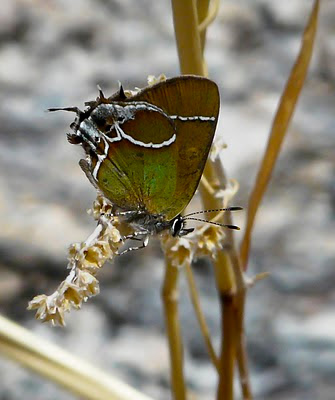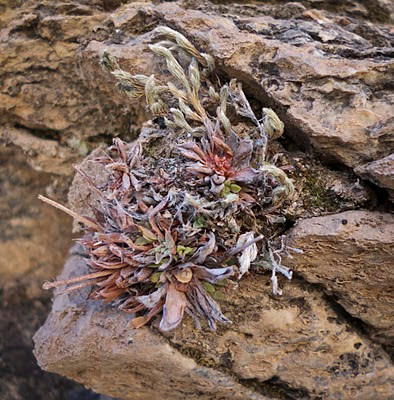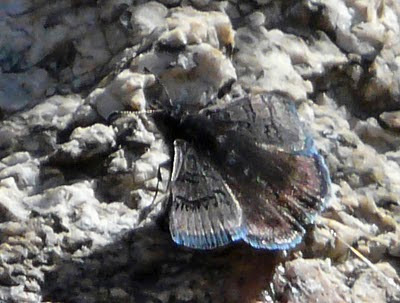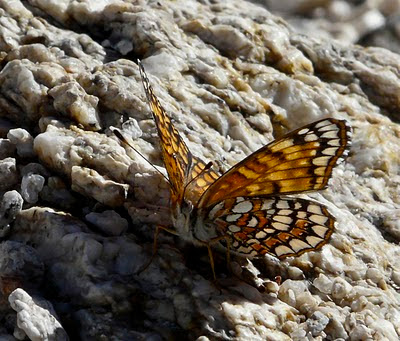Xami Hairstreak is exceedingly rare in Arizona.
(All photos by Narca)
The big highlight for everyone was a tiny Xami Hairstreak, the rarest of Arizona's breeding butterflies. Ken Kertell had been searching separately for the species today, and stayed with one until our group arrived on the scene. Xami caterpillars feed on succulents like Graptopetalum, which looked mostly withered, but was starting to send up some new shoots and leaves. Ken mentioned that Jim Brock thinks that, after a time, the caterpillars overwhelm the host plant, then Xamis disappear for a decade or more, and most likely recolonize from some other area. They are also known from Texas and Mexico.
Graptopetalum is the host plant for caterpillars of Xami Hairstreak.
Pipevine and Two-tailed Swallowtails, many Sara Orangetips, Desert Pearly Marbles, a Sleepy Orange, Brown Elfins, Gray Hairstreaks, Echo Spring Azures, Sagebrush Checkerspots, Texan Crescent, Golden-headed Scallopwings, Arizona Powdered Skipper, Sleepy Duskywing, and Funereal Duskywings rounded out the list of what most of us saw.
Sleepy Duskywing (Erynnis brizo) reflects a lovely blue fringe when it is very fresh and in the right light.
Sagebrush Checkerspots (Chlosyne acastus) were a real treat, too. I had only seen this species once before, in Death Valley.
Thanks to Mary, SEABA, and all the participants, who made the morning such a delight!











Dick Zweifel, who is our main butterfly expert around Portal, told me that the Sagebrush Checkerspot was common near Portal for about 5 years in the mid 1990s, but hasn't been found here since then.
ReplyDeleteHow exciting that you got to see one! I'm so envious. I should have dropped my work and come along. You're photos are great!
ReplyDelete